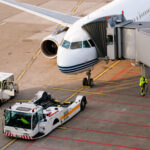The International Air Transport Association (IATA) has said sustainable aviation fuel (SAF) volumes are growing but the industry is still missing opportunities, as it announced estimates for production.
In 2023, SAF volumes reached over 600 million litres (0.5Mt), double the 300 million litres (0.25 Mt) produced in 2022.
SAF accounted for 3% of all renewable fuels produced, with 97% of renewable fuel production going to other sectors.
SAF production
In 2024 SAF production is expected to triple to 1.875 billion litres (1.5Mt), accounting for 0.53% of aviation’s fuel need, and 6% of renewable fuel capacity. The small percentage of SAF output as a proportion of overall renewable fuel is primarily due to the new capacity coming online in 2023 being allocated to other renewable fuels.
“The doubling of SAF production in 2023 was encouraging as is the expected tripling of production expected in 2024. But even with that impressive growth, SAF as a portion of all renewable fuel production will only grow from 3% this year to 6% in 2024. This allocation limits SAF supply and keeps prices high. Aviation needs between 25% and 30% of renewable fuel production capacity for SAF. At those levels aviation will be on the trajectory needed to reach net zero carbon emissions by 2050. Until such levels are reached, we will continue missing huge opportunities to advance aviation’s decarbonization. It is government policy that will make the difference. Governments must prioritize policies to incentivize the scaling-up of SAF production and to diversify feedstocks with those available locally,” said Willie Walsh, IATA’s Director General.
CAAF/3 outcome
The Third Conference on Aviation Alternative Fuels (CAAF/3) hosted by the International Civil Aviation Organization (ICAO) agreed a global framework to promote SAF production in all geographies for fuels used in international aviation to be 5% less carbon intensive by 2030. To reach this level, about 17.5 billion litres (14Mt) of SAF need to be produced.
“Governments want aviation to be net zero by 2050. Having set an interim target in the CAAF process they now need to deliver policy measures that can achieve the needed exponential increase in SAF production,” said Walsh.
Image: Boeing
Subscribe to the FINN weekly newsletter

